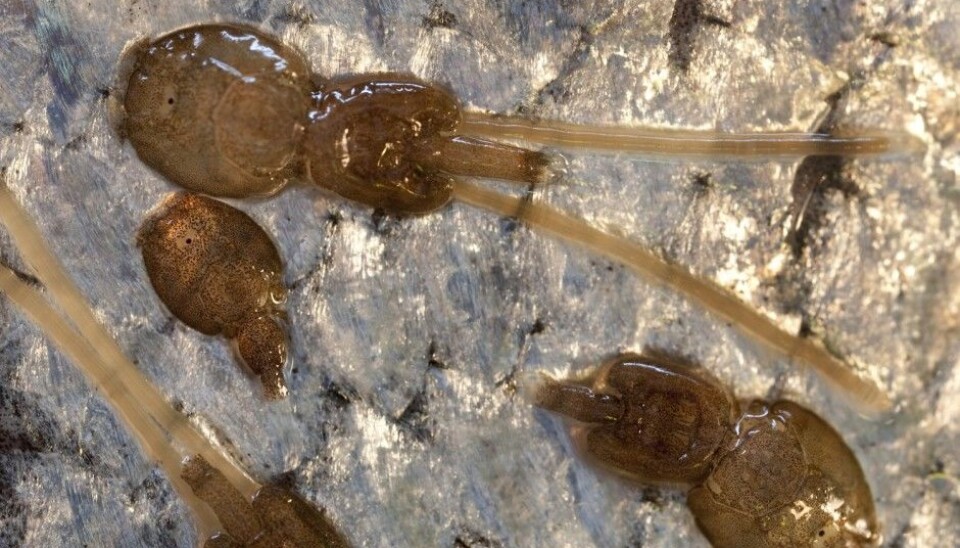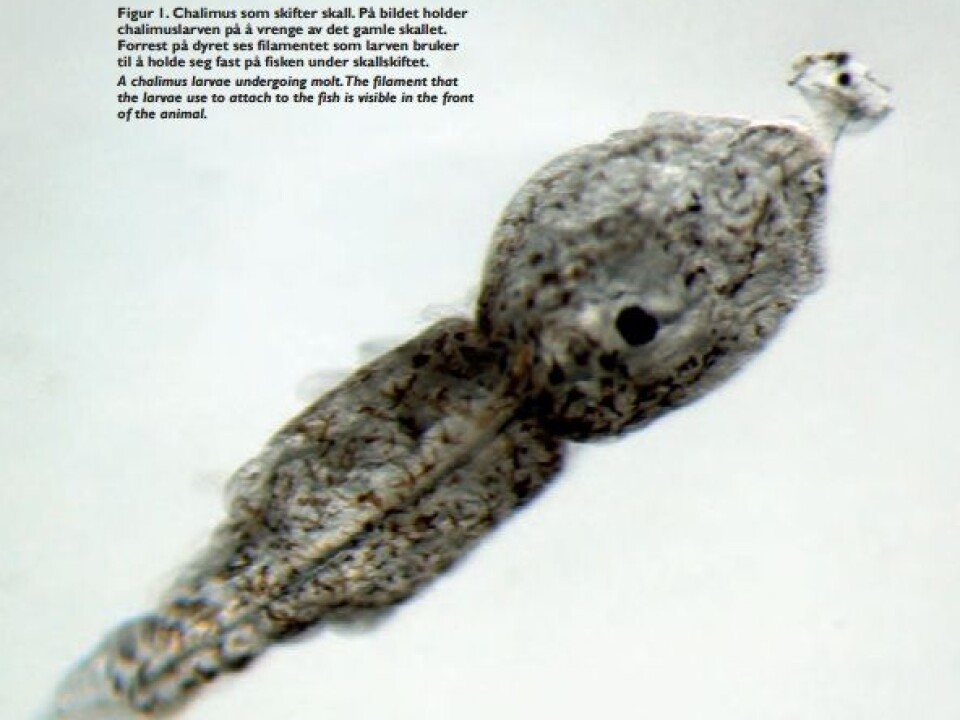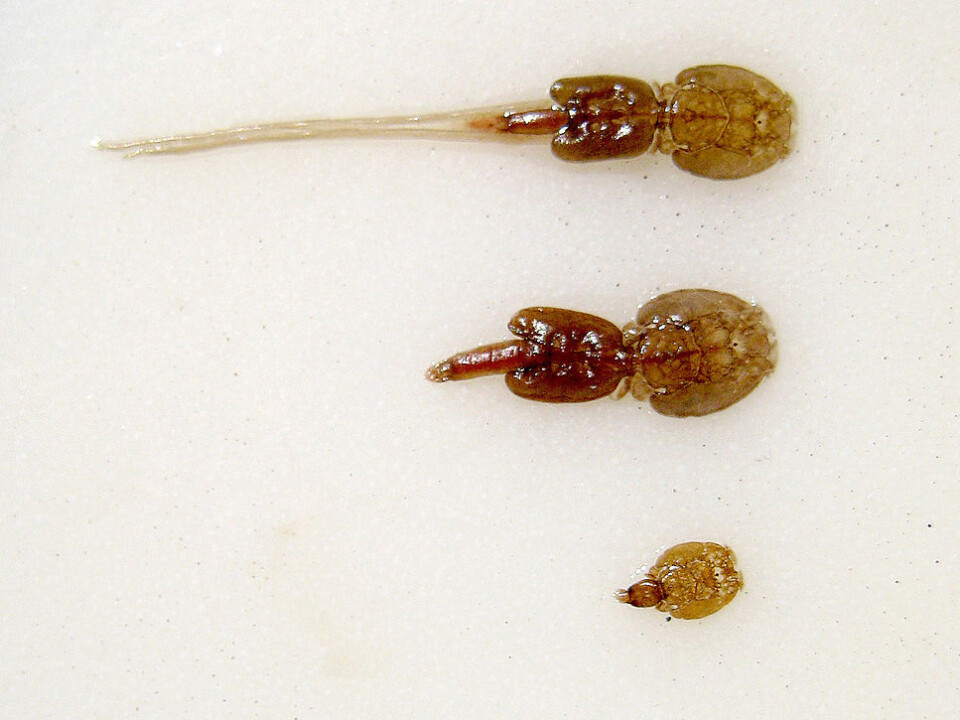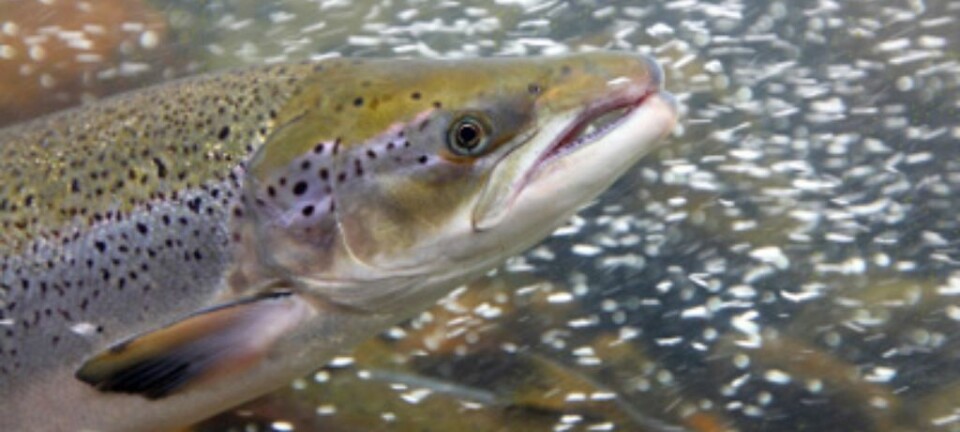
Can salmon lice end up on your dinner plate?
Are there any parasites on the fish you buy in the store?
Salmon lice have become a big problem for wild as well as farmed salmon. The parasites attach themselves to the salmon and live off the host’s blood, skin and slime. They can cause large sores and make the fish more vulnerable to infections.
But what direct effect do salmon lice have on consumers?
One of our readers wonders whether she has found a salmon louse on a filet she bought in a supermarket. Can these creatures really end up on your plate?
Tiny larvae
Øivind Øines says there actually is a very small chance that a salmon louse could end up on a filet bought retail. He is a parasite researcher at the Norwegian Veterinary Institute.

“The lice live on the skin of the fish and could tag along with the filet all the way to the plate. This would primarily have to be if chalimus larvae were attached to the fish,” writes Øines in an e-mail to our Norwegian affiliate, forskning.no.
The chalimus stage is a period when the salmon louse attaches itself to the fish but is still very, very tiny.
Salmon lice start their lives newly hatched drifting freely around in the water. It is nearly too small to see when it links up with a host fish. It goes through eight stages of life before becoming a full-grown adult.
A fully grown female salmon louse can be 12mm long.

When the louse is in the chalimus stage it is smaller than the juvenile louse at the bottom of the photo at the right.
A salmon louse is a species of parasitic crustacean called a copepod.
Øines says there is little chance of us finding a fully grown copepod on the fish we buy in markets.
“With a normal washing of the fish before preparing it a grown louse would rinse away from the skin. But some chalimus larvae could follow along with a filet,” writes Øines.
Small chances
Mette Wesmajervi Breiland researches fish health and salmon lice at the food research institute Nofima. She agrees that we are unlikely to find any on the fish we buy in stores, but this cannot be entirely ruled out.
“A farmed salmon is controlled and cleaned many times on its way from the fish farm, the harvesting plant and finally the retail market. This should mean salmon are free of lice before being packed and transported,” says Breiland.
Despite thorough controls we cannot rule out that a salmon louse can make it to the market,” continues Breiland.
Kari Lervik, director for quality control at the aquaculture Sinkaberg-Hansen, also says there is a small possibility for this to happen. But the industry has a number of precautionary measures in their operations which hinder lice from making it to our dinner tables.
“We have a programme for keeping the fish as free of lice as they should be,” she says to forskning.no.
When the fish arrives at the harvesting plant it hardly has any lice, she says. It is then controlled further, before being sent to wholesalers.
No harm in eating them
Breiland stresses that there is no harm in eating fish that do have lice on them. This is backed up by the food authorities on the website matportalen.no, who write that salmon that have or have had the parasites on them are fully edible.
“For a wild salmon it is a sign of quality that the salmon has lice when caught with rod and reel in rivers. This indicates that the fish has just migrated from the sea and can be expected to be of top quality,” says Breiland.
And if you for some reason want to eat the salmon lice, Øines recommends that you heat-treat the critters first.
“Like many other parasites in nature, salmon lice can also carry diseases, particularly ones that affect fish. Although I have never heard of them infecting humans, in theory this could be possible,” writes Øines.
Sources:
Lakselus, Norwegian Veterinary Institute. (In Norwegian)
Dalvin, S. Lakselusen har “miset” to livsstadier, Report by the Institute of Marine Research, Bergen (2014) (In Norwegian)
Translated by: Glenn Ostling
































